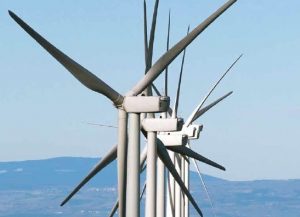3TIER, the global leader in renewable energy information services, has released its Quarterly Wind Performance Map showing that the intensity of the wind in the second quarter of 2010 has increased significantly in large portions of the United States. This upswing in wind is in marked contrast to the depressed average wind speeds experienced during the last quarter of 2009 and extending into the first quarter of 2010. These abnormally low wind speed conditions were the result of a long-lasting El Niño effect coupled with a strong, negative North Atlantic Oscillation (NAO) event.
“Swings in wind performance are common and part of the inherent nature of the resource,” says Scott Eichelberger, Ph.D., 3TIER director of advanced applications. “It’s clear that both the El Niño and NAO phenomena have weakened significantly and continue to wane. As a result above-average wind speeds have been experienced in the majority of the western U.S., extending from Washington State to Texas. Wind speeds in other areas of the U.S. were much closer to their long-term average.”
3TIER generated the Q2 Wind Performance Map using observational data and numerical weather prediction modeling. The map illustrates departures from the long-term mean that range from -10 percent to +10 percent, showing a pattern that is indicative of the climate state during the quarter. It provides an indication of how wind farms should have performed relative to their long-term production average based on their location. As a result of the weakening El Niño and NAO effects, the second quarter saw significant storm activity off the Pacific Coast, which helped drive the overall increase in wind performance in the western U.S. Texas, the country’s largest producer of wind energy, rebounded particularly well from the first quarter. Wind speeds over Texas were elevated enough to make up for the first quarter lull and push the state to above average for the year.
“Texas is a good example for how quickly wind resource strength can change,” Eichelberger says. “Our data showed below average values during January and February of 2010, the height of the recent El Niño, with a rapid shift to above average values during March and April as it weakened. While our clients are observing these variations at individual wind farms, our global wind resource data allows us to understand these patterns over broad geographic regions. The good news is that wind is predictable. Our computer modeling technologies are able to both quantify and anticipate these shifts, and in the short term, even predict the impacts on wind speed with a high degree of accuracy.”
As the wind industry continues to mature and the financial markets remain constrained, 3TIER believes project siting will demand a higher level of rigor when performing due diligence and accounting for long-term historical wind performance. To learn more go online to www.3tier.com.



























